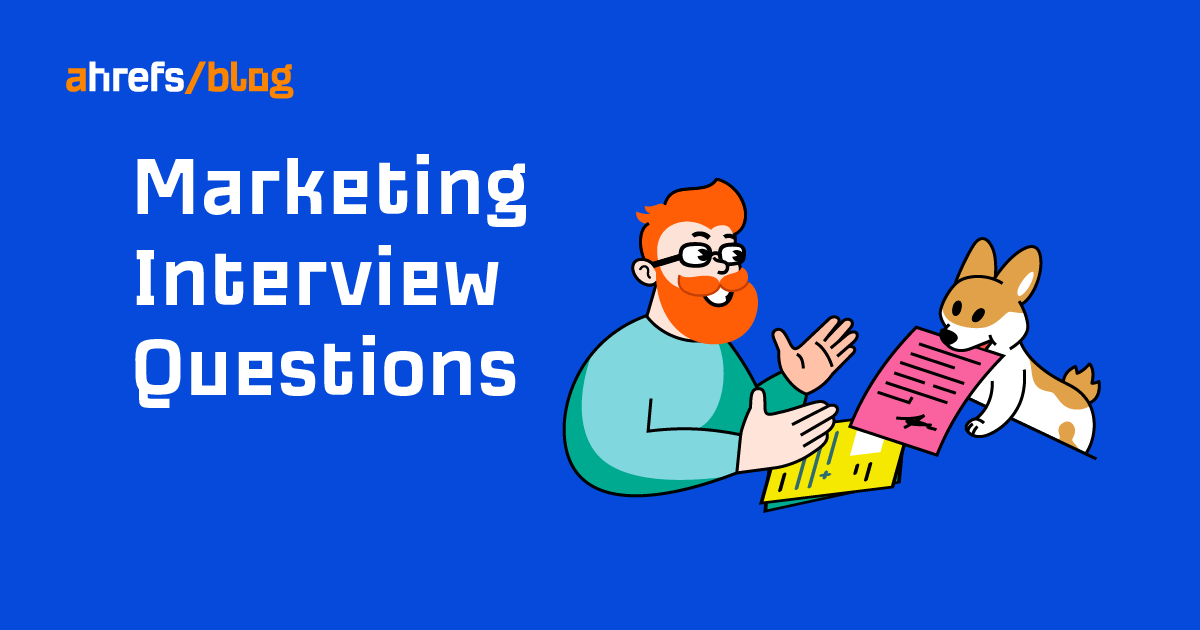10 Copywriting Mistakes That Dilute & Weaken Your Messaging via @sejournal, @mirandalmwrites
You work hard at crafting just the right message – don't sabotage your best efforts with these common copywriting mistakes. The post 10 Copywriting Mistakes That Dilute & Weaken Your Messaging appeared first on Search Engine Journal.

You only get one shot at a first impression.
This is never more true than with copywriting, where you have just seconds to get your point across and convince the reader to take action.
No one’s coming back later to be convinced the second time around.
And they aren’t reaching out to ask you to clarify what you really meant, either.
Putting weak-sauce copy out into the world is a waste of the time and energy you put into creating it.
Worse, it can be counterproductive and instill a negative image of your brand in the reader.
We don’t want that.
So use this column as a checklist as you review your next landing page, email newsletter, or another piece of copy.
Avoid these common copywriting mistakes to strengthen your messaging and inspire conversions.
1. Making Word Soup
Jargon, buzzwords, island, and industry lingo are painful for anyone who is not you to read.
Consider that 21% of U.S. adults are functionally illiterate; that is, their reading skills are considered inadequate for completing daily living and employment tasks such as reading labels, menus – and websites.
(Don’t get smug, Canada.)
Even those with high literacy skills get annoyed by unnecessarily complex language.
If I have to get out the dictionary or consult an industry wiki to figure out what you’re talking about, we’re probably done right there.
Wherever your audience, you could be unintentionally alienating a sizable swath of prospects by being too wordy.
WebFX has a free Flesch-Kincaid readability testing tool you can use to make sure you aren’t writing over the heads of your audience.
2. Writing From The Wrong Perspective
I liken this copywriting mistake to being that guy at the party no one wants to get stuck engaging because he talks about himself the whole time.
Great copywriting incorporates two very important things:
What the writer wants to say. What the reader wants to hear.You absolutely need to know the product or service inside and out.
But you’re completely missing the mark if what the business wants to say about it isn’t tempered with a healthy dose of what the reader wants to know.
Pourri, the makers of Poo-Pourri, not only creates hilarious commercials but writes stellar copy, too.
They could have simply said, “Enjoy the fresh, clean scent of citrus,” and that would have been an accurate description of what’s on offer here.
But no, they went and cleverly made me visualize myself sipping delicious brew in the sunshine, surrounded by fresh laundry (that someone else is magically coming along to fold and put away for me).
Great copywriting brings that user perspective that triggers that type of emotional reaction.
3. Sharing A Laundry List Of Benefits
Yes, it’s essential that you make the benefits of your product or service clear.
But you’re missing the mark if you’re just reciting them off with no consideration for what each one means to the reader.
“It has eight adjustable blades!”
Who cares? How are eight blades better than six?
Isn’t eight blades kind of excessive?
Give the end benefits context with copy that speaks directly to the user’s needs.
“Its eight adjustable blades make quick work of chopping and dicing, saving you precious prep time.”
Awesome, I like to save time and hate chopping. Take my money.
4. Regurgitating The Product Description
This works in the same way as the above.
Don’t just tell me what the feature is. Tell me why that matters to me.
Assuming it’s well-written, the product description does a fine job of laying out the product materials, colors, size, and other specs.
So don’t waste valuable copy telling me all of that over again.
I already know your course covers these 12 different topics.
Copywriting for a landing page, ecommerce store, etc. needs to go further and help me understand the difference that knowledge is going to make in my life.
5. Using Emotional Triggers For Evil
I’ve never been a fan of using negative emotional reactions as a sales tool.
Sure, it can be incredibly effective to tap into a person’s fear of losing their home to sell a payday loan, or make them feel uncertain about their body image to move a beauty product.
But while creating fear, uncertainty, and doubt (FUD) can move the product, it’s not the basis for a healthy ongoing customer relationship.
Women’s swimsuit descriptions are ripe for the FUD style of copywriting. You could focus on the features that will hide my bulk, mask my stomach pooch, and camouflage my flaws.
That style of copywriting does sell.
But you know what’s more compelling and makes me love the brand?
Copy like this:
Instead of making the reader feel terrible about their body, Summersalt focuses on the fun adventures I’m about to have in this swimsuit.
Seriously… take my money.
6. Using Passive vs. Active Voice
This one is a personal pet peeve.
Once you learn to recognize passive voice, I promise it’ll drive you bananas, too.
Active voice is direct, actionable, energetic, and clear.
Passive voice… is not.
In passive voice, the subject of the sentence is acted on by the verb.
Here’s an example:
Active voice: Professionals appreciate Basecamp’s simplicity.
Passive voice: Basecamp’s simplicity is appreciated by professionals.
Did you catch that? Here’s another one:
Active voice: You can find a new partner today.
Passive voice: A new partner can be found today.
Grammarly Premium is great for catching passive voice and is available as a browser plug-in.
Hemingway App is free if you don’t mind dropping your copy into a browser-based tool.
7. Over- Or Underthinking SEO
Focusing too intently on optimizing your copy for search can make it stilted, awkward, and unnatural to read.
However, failing to consider how people will find your content at all can be just as harmful.
If the copy you’re writing is destined for publication anywhere, you’d like people to be able to discover it via search. It can only benefit you to brush up on current on-page SEO best practices and incorporate those into your work.
But don’t go overboard.
Google is a lot smarter than it used to be. You don’t have to use all the words on your keyword list in just the right places to rank.
Focus on the quality of your writing and being relevant instead.
Casper does a fairly good job of this on its product pages.
 Screenshot from Casper, April 2022
Screenshot from Casper, April 2022
This copywriter managed to work in a lot of relevant keywords – down, pillow, cool, night, fluff, machine washable, softness.
These are all closely knit concepts that make it clear to Google what this page is about.
And yet they’re woven into compelling copy rather than acting as stumbling blocks in otherwise logical sentences.
Be thoughtful in how you use keywords. Be like Casper.
8. Going Absolutely Crazy With Intensifiers
Intensifiers are used to strengthen and emphasize adverbs.
They’re a great tool when used in moderation.
However, overusing intensifiers can make your writing very difficult to read and extremely hyperbolic in nature.
See what I did there? It seems a bit intense to say it would be very difficult to read. And is it really hyperbolic in the extreme?
“Very” is an intensifier that tends to sneak its way into copy too often. Other regular offenders include:
Really. Totally. Completely. Absolutely. Exceptionally. Remarkably. Super. So.Watch for intensifiers and challenge your usage of each one.
9. Using Idioms, Colloquialisms, and Other Obscure Language
Marketer and Minnesotan Angie Schottmuller once challenged me to use the word “cattywampus” in a writing marathon story. She made a pledge, and I had to figure this word out.
Otherwise, I wouldn’t have a clue what the American slang cattywampus meant if it surfaced in a piece of content.
I wouldn’t expect many Americans to follow along if I suddenly dropped a codswallop, a strop, or the dog’s dinner in here, either.
Colloquialisms are slang and regional phrases that add color and personality to a piece of writing. And that’s great if you’re writing a novel or short story about people in one specific region.
Not so much in business copywriting.
Idioms are similarly confusing phrases that, if taken literally, suggest to the reader that some pretty strange things are happening:
It’s raining cats and dogs. Don’t wait until chickens have teeth to get started. It’s time to bite the bullet. Don’t get bent out of shape. It’s not mustard after lunch yet. Some brands are a lot of noise and no walnuts.These are common in small pockets of the world.
But for the vast majority of readers, they result in confusion.
10. Forgetting The CTA
Don’t leave me hanging… tell me where we’re going next!
Every piece of copy needs at least one call to action to give the reader the easiest possible path to the desired next step.
It’s not always making the sale, either. You could be trying to drive them to download a lead generator, sign up for an email list, or read another more focused piece of content.
Some pages have multiple CTAs. Anywhere you identify a logical next step for your audience, give them the option.
It doesn’t have to be all “Buy now” and “Click here,” either. Get creative with your CTAs.
I like what Baileys is doing here:
Yes, please.
And that’s it! There are no earth-shattering secrets here – just good habits to develop as you make it part of your editing routine to weed out these common copywriting mistakes.
Your readers and conversion rates will thank you.
More resources:
13 Essential Online Writing Tools to Help Improve Your Content 17 SEO Copywriting Tips To Help Your Rankings 8 Free Courses For Writers & Content MarketersFeatured image: Shutterstock/Nata Shilo com

 Hollif
Hollif 






























.jpg&h=630&w=1200&q=100&v=6e07dc5773&c=1)
